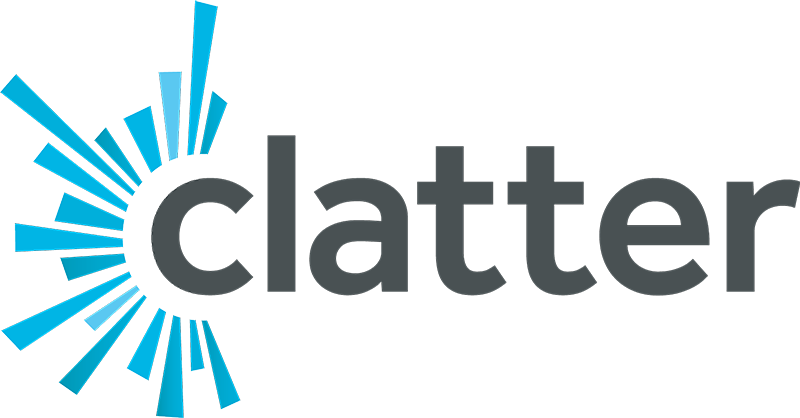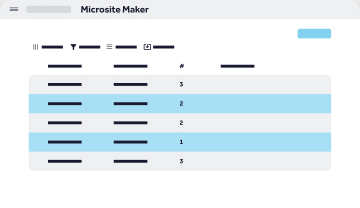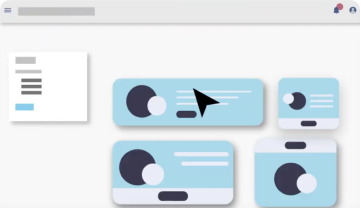Insurance marketing teams face a problem that keeps getting worse: Sales needs content fast, but every piece of collateral has to be compliant, on-brand, and accurate. Meanwhile, your team is drowning in requests to customize presentations, update product sheets, and create agent-specific materials.
That lead to off-brand collateral slipping through, outdated information getting shared with prospects, and your marketing team spending more time being a production shop than doing actual marketing.
Let’s look at why insurance content management is so challenging, what you can do about it, and the results you’ll see when you get it right.
Insurance Content Management Challenges
Challenge #1: Sales teams creating rogue decks with outdated or unapproved content
Your sales team or agents need a presentation for a meeting tomorrow. They can’t wait for marketing to customize something, so they grab an old deck, make their own edits, and head into the meeting. The problem? That deck might have last year’s product details, discontinued offerings, or messaging that hasn’t been approved by compliance.
This happens constantly in insurance because the sales cycle demands speed. But every rogue deck is a potential brand problem or compliance issue waiting to happen.
Challenge #2: Marketing bottlenecked by constant customization requests
“Can you customize this deck for a group health prospect?” “I need this brochure but with our California-specific language.” “Can you swap out these product details for our Medicare Advantage plan?”
Sound familiar? 58% of corporate marketers field requests for custom marketing materials from local partners weekly, with 26% facing these requests daily. Each one takes 30 minutes to several hours, depending on complexity. Your team becomes a customization factory instead of focusing on strategy, campaigns, or new product launches.
For a team of 10 marketers spending just 5 hours per week per person on these requests, that translates to 2,600 hours per year – essentially 325 lost workdays.
Challenge #3: Compliance risks from unauthorized modifications to regulated content
Insurance is heavily regulated. Every claim needs substantiation. Every statistic needs a source. Every benefit description needs precise language approved by legal and compliance teams.
When someone outside of marketing modifies a piece of content, they might inadvertently change compliant language to something that creates regulatory risk. They might remove required disclosures. They might make a claim that isn’t properly substantiated. These aren’t malicious acts – people just don’t know what they don’t know.
The consequences are real. In 2023, a major insurance carrier was fined $1.5 million by state regulators for failing to properly oversee agent marketing materials, which included misleading advertising.
Challenge #4: Inconsistent branding across agents, brokers, and regions
Your brand guidelines specify certain fonts, colors, messaging frameworks, and visual standards. But when you have hundreds of agents or brokers creating their own materials, or when regional offices customize content independently, brand consistency falls apart quickly.
One region is using old logos. Another is off-message with value propositions. Agents are creating their own materials with clip art and inconsistent formatting. The result is a fragmented brand experience that confuses prospects and undermines trust.
Challenge #5: Version control nightmares with multiple product lines
Insurance companies often manage dozens of product lines, each with different coverage options, state-specific variations, and regular updates. When your team maintains separate files for each variation, version control becomes impossible.
Which version is current? Did this get updated with the Q3 changes? Is this the California version or the Texas version? These questions waste time and create risk when the wrong version gets distributed. According to research, bad data costs insurance carriers 20% of their revenue, and version control issues are a major contributor to data problems.
Solutions for Better Insurance Content Management
For rogue content: Establish a centralized, pre-approved content library
Create a single source of truth where all approved, current content lives. This library should include presentations, brochures, one-pagers, case studies, and any other collateral your sales team regularly needs.
The key is making this library easily accessible and searchable. If sales can’t quickly find what they need, they’ll revert to using whatever they have on their hard drive. Organize content by product line, audience, use case, or whatever taxonomy makes sense for your organization.
Every piece in this library should be current, compliant, and ready to use. Regular audits ensure outdated content gets archived and new content gets added promptly.
For marketing bottlenecks: Implement self-service tools with built-in guardrails
Give your sales team and agents the ability to customize content themselves, but within parameters you control. This means providing tools where they can personalize presentations, swap in relevant case studies, or adjust content for specific prospects – all without leaving the approved framework.
The guardrails are crucial. Sales should be able to choose from pre-approved content blocks, select relevant product information, and add prospect-specific details. But they shouldn’t be able to change core messaging, alter compliance language, or break brand standards.
This approach gives sales the speed they need while giving marketing the control they require.
For compliance risks: Use lockable content blocks and approval workflows
Not all content should be editable. Legal disclaimers, regulatory disclosures, benefit descriptions, and other compliance-sensitive content should be locked down. Users can include these blocks in their materials, but they can’t modify them.
For content that does need customization, implement approval workflows for higher-risk changes. If someone wants to make a significant modification to messaging or add new claims, route it through compliance review before it can be finalized.
This creates a balance between speed and risk management. Routine customizations happen instantly. Higher-risk changes get appropriate oversight.
For brand inconsistency: Create templates with approved messaging and design standards
Provide templates that bake in your brand standards. Fonts, colors, logo placement, and layout should be pre-configured. Messaging frameworks and value propositions should be built into the structure.
When users create new materials, they’re starting from a branded foundation rather than a blank slate. This makes it nearly impossible to go off-brand, even for users who aren’t design-savvy. 82% of organizations now use templates to aid in content creation, recognizing their value in maintaining consistency.
Include style guidance within the templates themselves – helper text that explains what type of content goes where, examples of good messaging, and reminders about what to avoid.
For version control: Maintain a single source of truth with automatic updates
Instead of distributing files that live on individual hard drives, connect users to cloud-based content that updates centrally. When you make a change to a product description or update a statistic, that change propagates everywhere the content is used.
This eliminates version control problems. There’s no “old version” floating around because everyone is accessing the same, current content. When regulatory changes require updates, you make them once and they’re immediately reflected across all materials.
Use clear version numbering and change logs so users can see what’s current and what’s changed over time.
Results You’ll See
Marketing teams reclaim 100+ hours per year for strategic work
When sales can customize their own collateral in minutes, your marketing team stops being an order-taking production shop. Those hours spent on tactical customization requests get redirected to strategy, campaign development, and initiatives that actually move the business forward.
Many insurance marketing teams report saving 150+ hours per person annually once they implement better content management systems. That’s nearly a month of work time redirected to higher-value activities.
Sales teams get customer-ready materials in minutes, not days
Speed matters in competitive sales situations. When your team can customize a presentation in five minutes instead of waiting two days for marketing to do it, they’re more responsive to prospects and more likely to win deals.
This speed advantage is especially valuable in insurance, where agents often compete for the same prospects and timing can make the difference between winning and losing business.
Reduced compliance risk and audit-ready documentation
With proper guardrails and lockable content, you dramatically reduce the risk of compliance issues. When auditors come calling, you can demonstrate that all distributed content came from approved sources and followed proper workflows.
This peace of mind is invaluable in a regulated industry where compliance violations can result in significant fines and reputational damage.
Consistent brand experience across all customer touchpoints
When everyone is working from the same templates and approved content, your brand becomes consistent across agents, regions, and channels. Prospects see a professional, cohesive brand regardless of who they’re talking to or what materials they receive.
This consistency builds trust and reinforces your market position. Companies that provide consistently best-in-class experiences generate two to four times more growth in new business and 30% higher profitability than firms with an inconsistent customer focus.
Faster time-to-market for new products and campaigns
When you need to launch a new product or campaign, you update your centralized content library once and it’s immediately available to your entire sales organization. No more tracking down who needs what or manually distributing files to dozens of regional offices.
This agility is a competitive advantage in a fast-moving market.
Getting Insurance Content Management Right
Insurance content management doesn’t have to be complicated. The core principle is simple: give your sales team the speed and flexibility they need while maintaining the control and compliance you require.
Start by auditing your current content and identifying the biggest pain points. Are rogue decks your biggest problem? Compliance risks? Marketing bottlenecks? Focus your initial efforts where you’ll see the most immediate impact.
Then build systems that address these specific challenges. You don’t need to solve everything at once. Even incremental improvements in how you manage insurance content will free up your marketing team’s time, reduce risk, and help your sales team move faster.
The insurance companies that get content management right gain a real competitive advantage. They move faster, maintain tighter brand consistency, and give their marketing teams space to do strategic work instead of just pushing pixels. That’s worth the investment.
Here at Clatter, we help teams create sales and marketing collateral that’s always on-brand, accurate, and organized. Click here to talk to our team.



